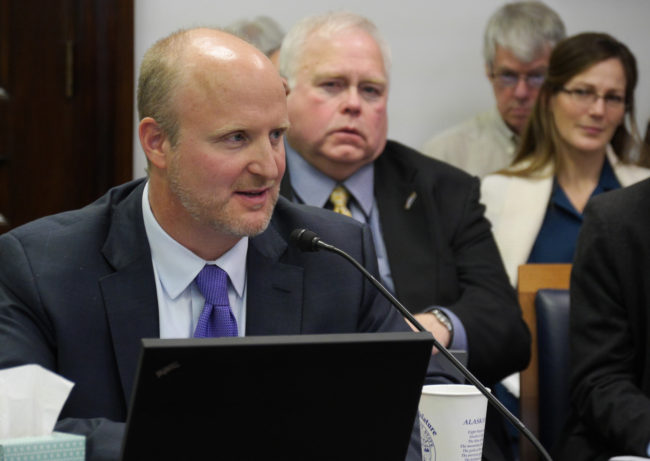
A group of oil industry representatives, tax experts, lawmakers and state employees met on August 22, to start the process of decoding a controversial new oil and gas tax credit law.
It took just over five months for the Alaska legislature to settle on the key components of the latest oil and gas tax revision; it’s going to take several more for the state’s Department of Revenue to finish regulations interpreting the new law — House Bill 111.
And those interpretations can cost companies, or the state, millions.
One big step in in this process is figuring out how — and when — the state’s cashable tax credit program will end. Lawmakers drew the line at July 1, 2017. Any work that happens after that date, that is eligible for a state tax credit, is supposed to be awarded under a new system.
“So, for those credits that are tied to a specific set of expenses, like an exploration credit, that’s easy to do,” said Department of Revenue Tax Division Director Ken Alper. “And we’re able to say, this invoice is from before July 1 and this one is after.”
But some tax credits don’t work that way, like a net operating loss credit, which a company can take when it spends more than it makes on a project. That loss typically is calculated annually.
“It’s very difficult to break that up and say what portion of the loss comes from what month,” Alper said.
Alper said there is a workaround this year. Companies will be allowed to calculate net operating loss tax credits for the entire year’s work. Then, half of that credit will be eligible for cash, and the other half will fall under the new law.
People who testified asked for clarification on other parts of the bill, including a “ring-fencing” provision that changes how fields owned by the same company are separated for tax credits, and a section that allows companies to apply tax credits to what they owe from previous years.
Most of the provisions of the new bill go into effect on Jan. 1, 2018. John Larsen, audit master for the state’s tax division, said the Department of Revenue plans to have the regulations out by then.
The tax division is taking comments until August 29. There will be a set of draft regulations out and another round of public comment in October.
